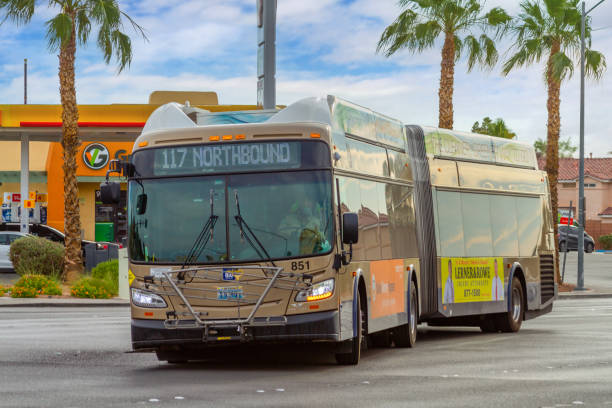
Over the past 10 years, Las Vegas has experienced a large influx of new residents. With new developments being built across the valley and many moving into Southern Nevada from states like California, Nevada’s population is sure to continue rising.
However, with this increase in population, comes an increase in vehicles on Nevada roads as well.
Unless Southern Nevada residents begin to take public transit more often or create more options for public transportation, Clark County residents and commuters will be facing a large issue of daily traffic and increased commute times.
That being considered, what is the best route in addressing the situation, and how does the Southern Nevada Regional Transportation Commission plan on tackling this potential traffic problem?
“I have definitely noticed more accidents happening, especially on the freeway when I’m on my way to campus,” said Armando Garayua-Navarro, a freshman Honors College student majoring in biological science at UNLV.
Garayua-Navarro said that the 25-minute drive from his house can grow longer due to traffic fluctuations. Though he said how much it changes is unpredictable.
“It seems that an accident is always happening every week, further disrupting the downtine between campus and home, affecting many commuters,” Garayua-Navarro said. “I also think the speed limit should be enforced more, as I always notice everybody is always just 15-20 miles above the speed limit.”
According to RTC’s Access 2050 Regional Transportation Plan, Southern Nevada’s current 2.3 million residents will eventually reach the mark of over three million by the year 2050. This is a prediction that is expected to be carried out regardless of Clark County’s real estate situation.
One of the ways the RTC plans to accommodate this new population is by upgrading some of Southern Nevada’s existing transportation areas, such as Maryland Parkway and Boulder Highway. A large factor of the upgrade is the new transit shelter design, which would increase safety and comfort for those walking, biking or taking public transit.
While these plans by the RTC have been tediously thought out, they also require a large amount of money and time, as the Boulder Highway renovation is expected to take anywhere from two to five years, and cost up to $90 million.
In collaboration with Clark County and the City of Henderson, the RTC initiated an adaptive signal control technology pilot program that will replace traditionally timed traffic lights with ones that react to changing traffic conditions.
By doing so, the RTC hopes to significantly cut down traffic times and continue a decent flow from Beckler Drive to Pebble Road, an area that has 14 intersections and connects to the I-215.
With these plans to expand transportation options and improve transportation technology, the RTC will be helping ease Las Vegas into the transition of accommodating more drivers on Southern Nevada roads.
Since the RTC is taking incredible strides with their future plans, it is up to the public to take advantage of the myriad of public transportation options available, whether that means taking an Uber or riding the city bus.
The influx of vehicles on the road over the next 25 years or so may be concerning, but if the RTC carries through with all of their plans, traffic, even if it increases, should be kept under control.
